
How to Use 2 channel relay module: Examples, Pinouts, and Specs
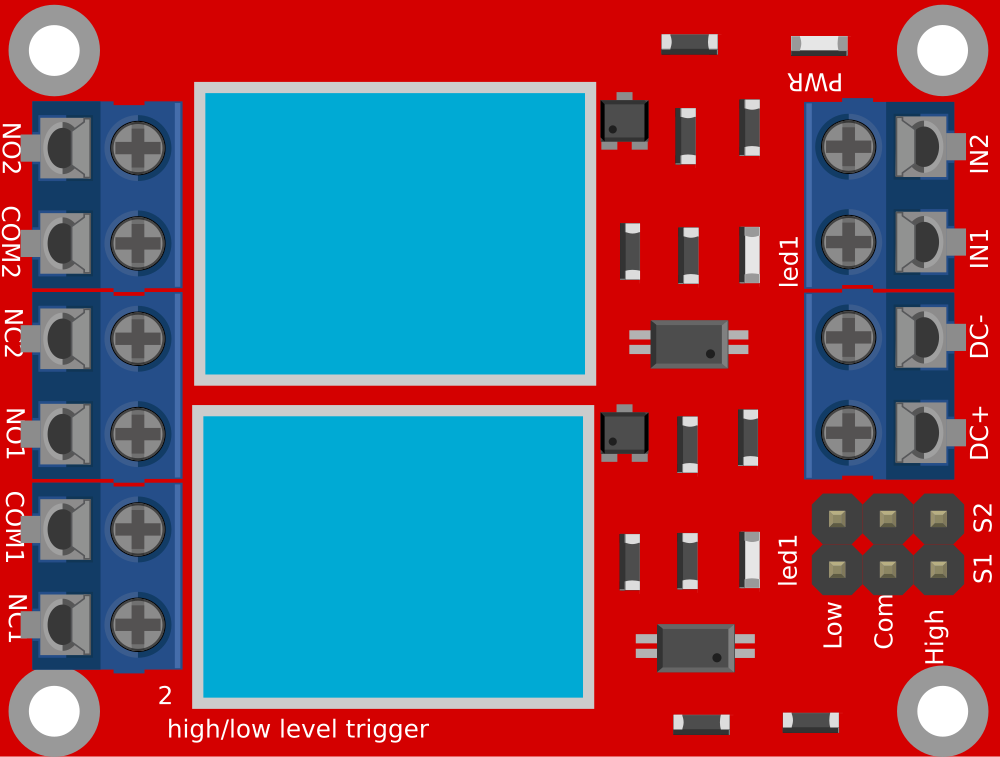
 Design with 2 channel relay module in Cirkit Designer
Design with 2 channel relay module in Cirkit DesignerIntroduction
A 2-channel relay module is an electronic switch that allows a low voltage or current signal to control a much higher voltage and current circuit. This module contains two independent relays that can be used to control various devices like motors, lights, and other home appliances. It is commonly used in automation projects, home automation systems, and with microcontrollers such as the Arduino UNO.
Explore Projects Built with 2 channel relay module
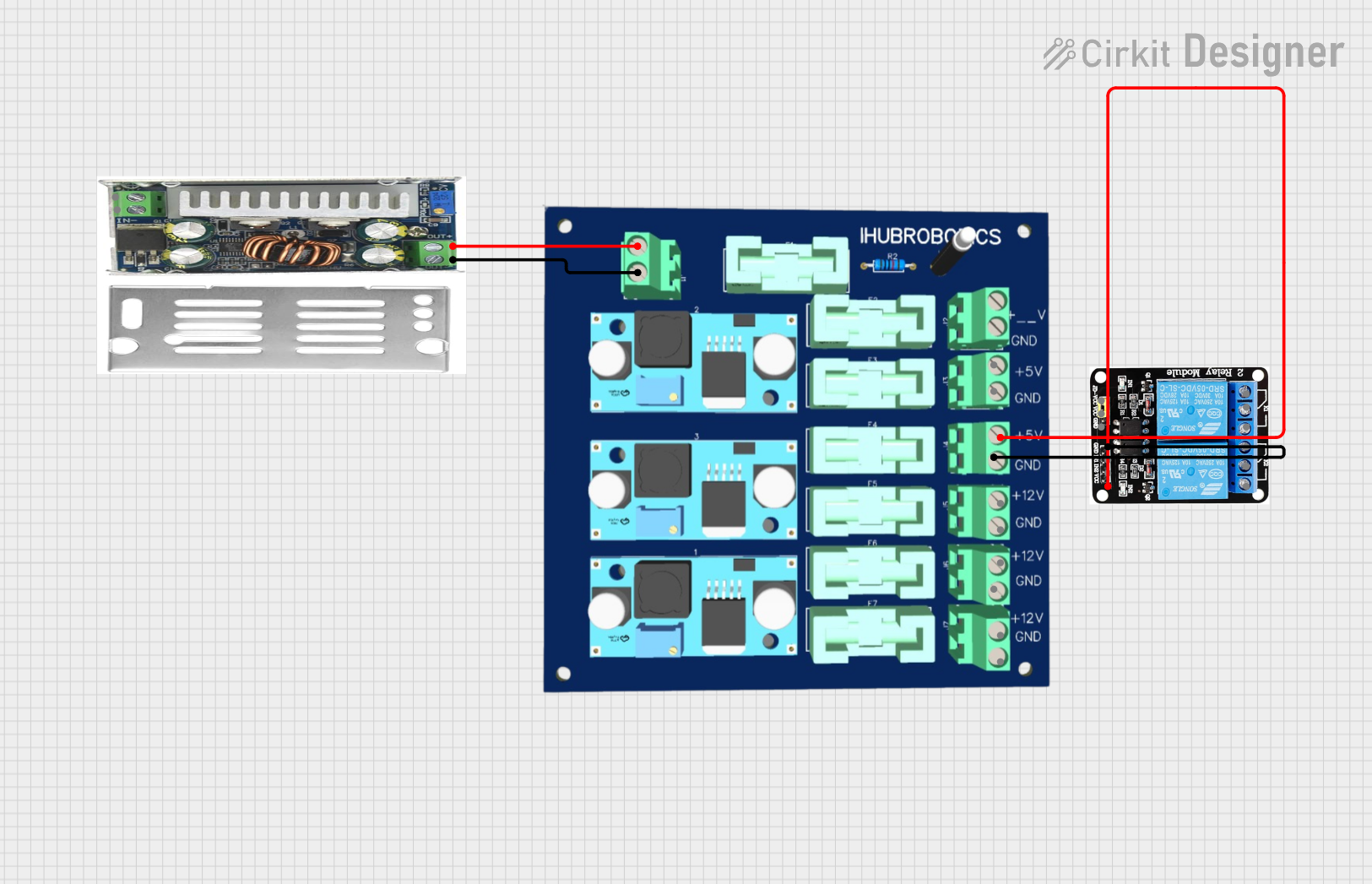
 Open Project in Cirkit Designer
Open Project in Cirkit Designer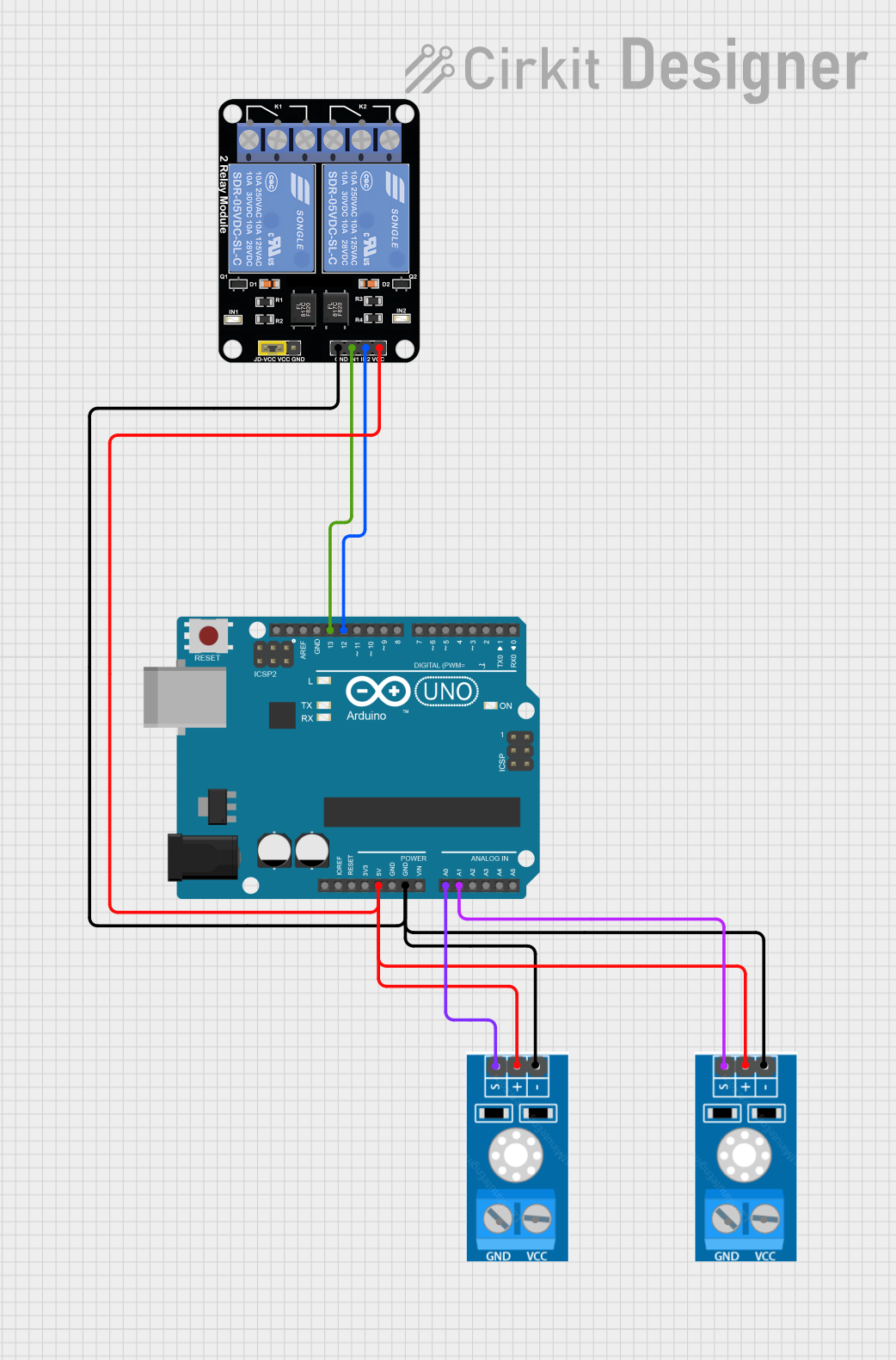
 Open Project in Cirkit Designer
Open Project in Cirkit Designer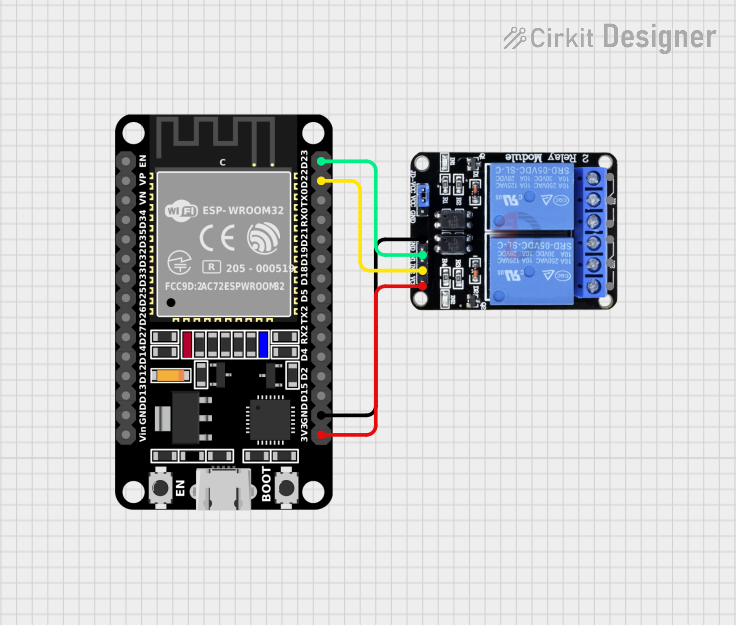
 Open Project in Cirkit Designer
Open Project in Cirkit Designer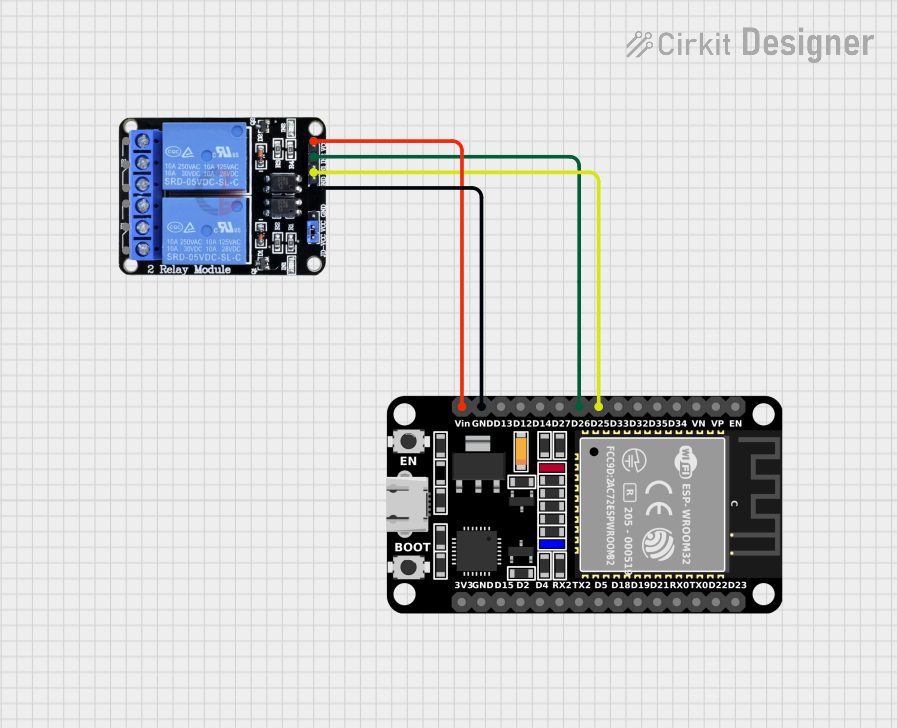
 Open Project in Cirkit Designer
Open Project in Cirkit DesignerExplore Projects Built with 2 channel relay module

 Open Project in Cirkit Designer
Open Project in Cirkit Designer
 Open Project in Cirkit Designer
Open Project in Cirkit Designer
 Open Project in Cirkit Designer
Open Project in Cirkit Designer
 Open Project in Cirkit Designer
Open Project in Cirkit DesignerTechnical Specifications
Key Technical Details
- Operating Voltage (VCC): 5V DC
- Trigger Voltage (IN1, IN2): 0-1.5V (LOW trigger), 2.5-5V (HIGH trigger)
- Current Consumption: 15-20mA for one relay
- Maximum Switching Voltage: 250VAC / 30VDC
- Maximum Switching Current: 10A
- Relay Life: 100,000 cycles (typical)
Pin Configuration and Descriptions
| Pin | Description |
|---|---|
| VCC | Connect to 5V power supply |
| GND | Connect to ground |
| IN1 | Control signal for relay 1 (active LOW or HIGH depending on the module) |
| IN2 | Control signal for relay 2 (active LOW or HIGH depending on the module) |
| NO1 | Normally open contact for relay 1 |
| COM1 | Common contact for relay 1 |
| NC1 | Normally closed contact for relay 1 |
| NO2 | Normally open contact for relay 2 |
| COM2 | Common contact for relay 2 |
| NC2 | Normally closed contact for relay 2 |
Usage Instructions
Connecting the Relay Module to a Circuit
- Connect the VCC pin to a 5V power supply.
- Connect the GND pin to the ground of the power supply.
- Connect the IN1 and IN2 pins to the digital outputs of a microcontroller.
- Connect the device you want to control to the NO (Normally Open) or NC (Normally Closed) and COM (Common) pins of the relay.
Important Considerations and Best Practices
- Ensure that the power supply voltage matches the operating voltage of the relay module.
- Do not exceed the maximum switching voltage and current ratings of the relays.
- Use flyback diodes when controlling inductive loads to prevent back EMF damage.
- Always ensure proper isolation when working with high voltage circuits.
- Consider using a separate power supply for the relay coils to prevent noise in the microcontroller circuit.
Example Code for Arduino UNO
// Define relay control pins
const int relay1Pin = 2;
const int relay2Pin = 3;
void setup() {
// Set relay pins as output
pinMode(relay1Pin, OUTPUT);
pinMode(relay2Pin, OUTPUT);
// Initialize relays to OFF (assuming LOW trigger relays)
digitalWrite(relay1Pin, HIGH);
digitalWrite(relay2Pin, HIGH);
}
void loop() {
// Turn on relay 1
digitalWrite(relay1Pin, LOW);
delay(1000); // Wait for 1 second
// Turn off relay 1
digitalWrite(relay1Pin, HIGH);
delay(1000); // Wait for 1 second
// Turn on relay 2
digitalWrite(relay2Pin, LOW);
delay(1000); // Wait for 1 second
// Turn off relay 2
digitalWrite(relay2Pin, HIGH);
delay(1000); // Wait for 1 second
}
Troubleshooting and FAQs
Common Issues
- Relay not activating: Check the input signal voltage and connections.
- Intermittent operation: Verify that the power supply can deliver sufficient current.
- Noise issues: Use a separate power supply for the relay module.
Solutions and Tips
- If the relay does not switch, ensure that the control signal is within the correct voltage range.
- For high-current applications, ensure that the relay contacts are not welding shut due to high inrush currents.
- Use opto-isolation if there is a need to completely isolate the control circuitry from the high-power circuit.
FAQs
Q: Can I control the relay module with a 3.3V signal? A: Some relay modules can be triggered with 3.3V, but it's important to check the specifications of your specific module.
Q: Is it safe to switch AC loads with the relay module? A: Yes, but ensure that you are qualified to work with AC voltages and that all safety precautions are taken.
Q: Can I use PWM to control the relay module? A: No, relays require a steady LOW or HIGH signal to switch states. PWM signals will cause erratic behavior.